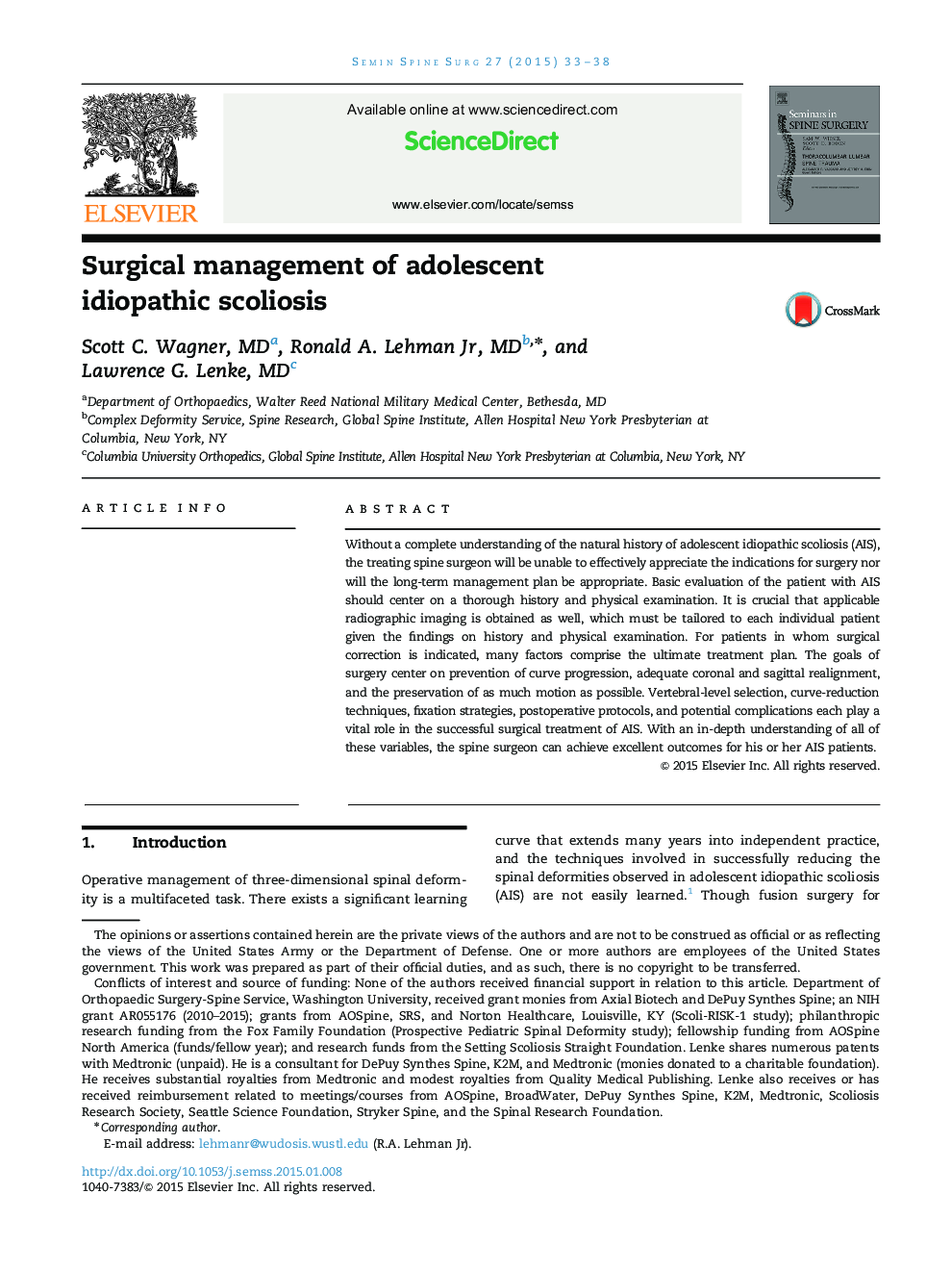| Article ID | Journal | Published Year | Pages | File Type |
|---|---|---|---|---|
| 4094531 | Seminars in Spine Surgery | 2015 | 6 Pages |
Without a complete understanding of the natural history of adolescent idiopathic scoliosis (AIS), the treating spine surgeon will be unable to effectively appreciate the indications for surgery nor will the long-term management plan be appropriate. Basic evaluation of the patient with AIS should center on a thorough history and physical examination. It is crucial that applicable radiographic imaging is obtained as well, which must be tailored to each individual patient given the findings on history and physical examination. For patients in whom surgical correction is indicated, many factors comprise the ultimate treatment plan. The goals of surgery center on prevention of curve progression, adequate coronal and sagittal realignment, and the preservation of as much motion as possible. Vertebral-level selection, curve-reduction techniques, fixation strategies, postoperative protocols, and potential complications each play a vital role in the successful surgical treatment of AIS. With an in-depth understanding of all of these variables, the spine surgeon can achieve excellent outcomes for his or her AIS patients.
